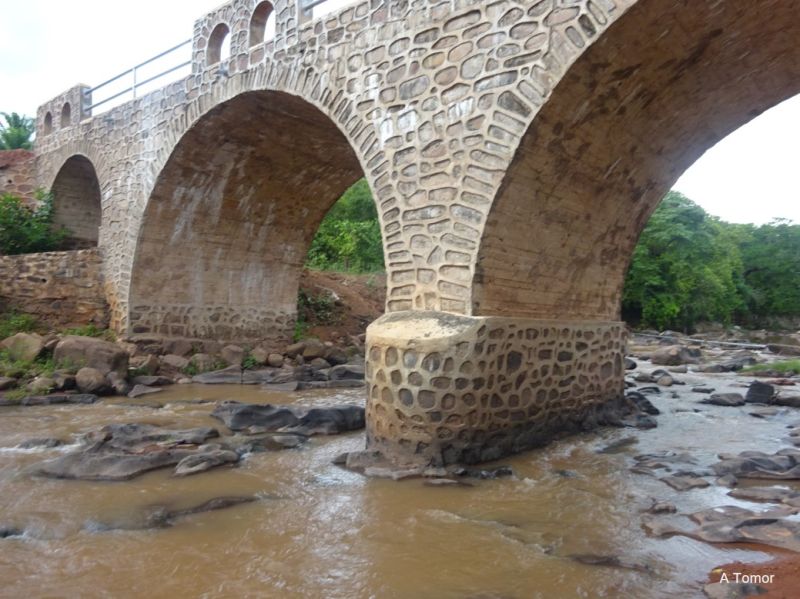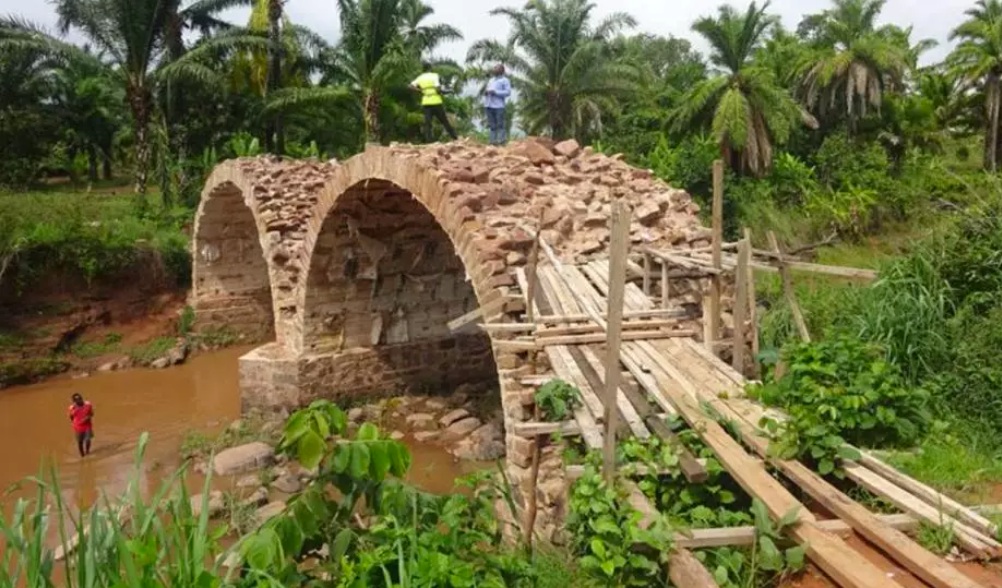
An ancient approach to crossing rivers has taken hold in rural Tanzania, where communities are building stone-arch bridges for some $47,000 apiece as cheap and sustainable alternatives to concrete and steel structures.
Getting to hospital, going to school, work or the market for most people in rural Tanzania depends on crossing a river safely.
About 40 million people live in remote parts of the East African country, one of the world’s poorest economies.
High costs of steel and reinforced concrete and a fast-growing population mean the national government struggles to build much-needed roads and bridges. But a fresh approach that revives the ancient art of stone-arch bridge-building could safely and sustainably get millions of rural Tanzanians where they need to go.
Belgian charity Enabel and Tanzania’s Rural and Urban Roads Agency have built 70 stone arch bridges in the past four years for villages in Kigoma, North Western Tanzania.
“Stone bridges offer an ultra-low-emission alternative to concrete and steel with minimal maintenance costs,” said structural adviser Dr Adrienne Tomor, who teaches civil and environmental engineering at Brunel University London.
Standard steel and concrete bridges call for expensive, carbon-greedy industrial materials and machinery. Kigoma’s new stone bridges are built with locally sourced stone, sand and wood and importantly, labour – which are all cheap and in good supply.

“The stone arrives on bike or large pieces cut out of a river bed and the local community dig the foundations,” said Dr Tomor.
“They are surfaced with the reddish local soil, murrum, which compacts easily and withstands the monsoon, which is no small ask. No machinery is used, so I have great respect for the builders who, sometimes working in monsoon floods, create these bridges through ingenuity, skill and muscle power.”
Shunning steel, cement and conventional construction techniques for local labour and materials cuts costs by 80 to 85% and lowers carbon emission 50 to 80%. And money spent building them can be poured back into the community, rather than spent on hiring expensive equipment and paying big companies’ big salaries.
Besides cost and environmental benefits, having had a hand in their building, local people are invested in the bridges and want to maintain them.
The bridges cost about $46,900 (£35,000) each to build and are 80% funded by Enabel, which has translated a construction manual into Swahili for the roads agency to use.
Putting the project out to tender, the agency can afford to build one concrete bridge a year. Involving local people in construction, that same budget can fund 10 stone bridges. It also means local governments don’t have to ask central government for financial backing and can upgrade more rural roads without their budget ballooning.
“Both the design and execution rely on simple rules of thumb that have been tried and tested through time,” said Dr Tomor, who checked quality and structural performance.
“Masonry bridges last much longer than concrete or steel, probably minimum twice the life span. There is a compelling case for reviving this incredibly long-lasting material.”
Tanzania’s government is weighing up a plan to roll the project out nationally.
“There is much the developed world can learn from this,” said Dr Tomor. “It certainly raises some questions about why masonry arch bridges aren’t really considered as an option in the West… especially with our drive for more sustainable construction and reduction in carbon.”
Comments
Comments are closed.







Great use of local materials know how and labour. This self-reliance will help in embuing a maintenance culture through an ownership mindset in the people that use it. Brilliant realistic development
This is a vivid example on how international development agency can revolutionalize development model in development countries . Bravo to Enabel for pioneering arch stone bridge in Tanzania and I think they can also roll out this model into Rwanda where I belong .
I am very happy to see this innovation. Let Tanroads use this technology every where to save costs.
Actually this technology is very very vitally especially in rural areas whereby the traffic is minimal, local materials mainly hardstones are available and the Community found very committed.